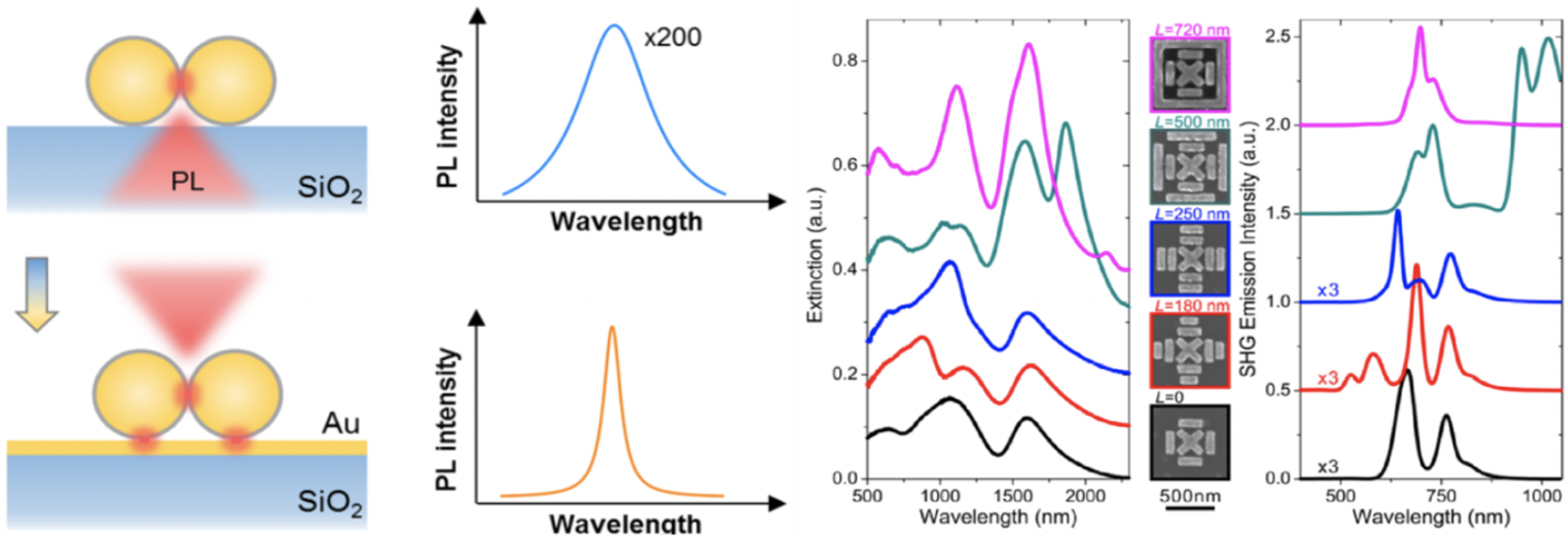Quantum plasmonics and nonlinear nanophotonics
When metallic nanostructures have sub-nanometer feature sizes, their far-field and near-field plasmonic properties cannot be accurately described by classical electromagnetic theories because of the emergence of several important quantum mechanical size effects such as spatial nonlocality, quantum tunneling and electron transport. Although recent experimental and theoretical studies have revealed pronounced quantum signatures in sub-nanometer sized metallic structures, the plasmonics community still calls for comprehensive understanding of their manifestation in strongly coupled structures and the respective working range of each effect. In the context of the aforesaid research background, our group has carried out the following representative studies over the past few years:
(1) applied surface-enhanced Raman spectroscopy of graphene to reveal the limiting effect of spatial nonlocality in plasmonic near-field enhancements in rough metal films (Nanoscale 6 (3), 1311-1317, 2014) and metallic particle-on-film nanocavities (ACS Nano 13 (7), 7644-7654, 2019);
(2) used electron energy-loss spectroscopy to study the effects of spatial nonlocality and electron tunneling in the bonding and anti-bonding dipolar resonances of metallic nanosphere dimers (Advanced Quantum Technologies 1, 1800016, 2018);
(3) employed surface-enhanced Raman scattering (ACS Nano 12 (7), 6492-6503, 2018) and two-photon photoluminescence spectroscopy (Nanophotonics 10 (9), 2467-2479, 2021) to reveal the quantum charge transport phenomena in three-dimensional plasmonic molecular junctions.
(4) Discovered the long-hidden phenomenon of light-induced electromagnetic asymmetry in symmetry-broken plasmonic nanocavities and unravelled its fundamental role in enhancing the frequency up-conversion efficiency of coherent light at the nanoscale, such as second-harmonic generation (Nature Communications 12, 4326, 2021).

